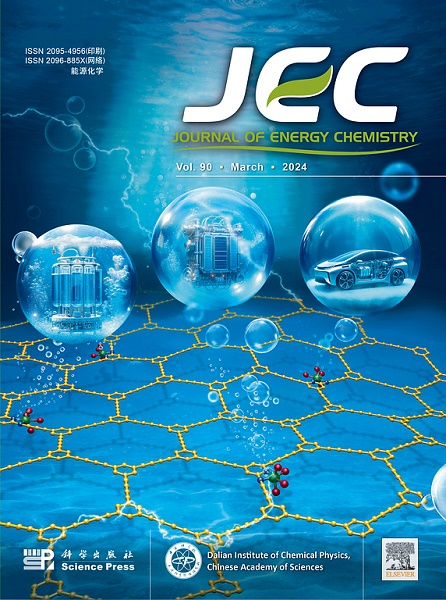Stabilization of flame-retardant gel polymer electrolyte against Na anode via an additive confined MOF-based composite gel interlayer
IF 13.1
1区 化学
Q1 Energy
引用次数: 0
Abstract
Flame-retardant gel polymer electrolyte (FRGPE) with high ionic conductivity and practical safety is essential for the next generation of high energy density sodium metal batteries (SMBs). However, they suffer from serious side reactions and insufficient interfacial stability against sodium metal anode, causing severe performance degradation and even safety issues. Herein, to address these challenges, a fluoroethylene carbonate (FEC) additive confined metal-organic framework (MOF)-based composite gel (AC-MCG) interlayer was constructed upon sodium anode through a facile in-situ UV-induced photopolymerization. The FEC confined in AC-MCG induces the formation of NaF-rich inorganic solid-electrolyte interphase, effectively eliminating the side reactions between the FRGPE and sodium metal anode. Moreover, the MOF with ordered nanochannels can homogenize Na+ flux during the plating process and also endow the AC-MCG interlayer with high mechanical strength, thus sufficiently suppressing the growth of sodium dendrites. Benefitting from these merits of the AC-MCG interlayer, a high critical current density of 2.0 mA cm−2 and a long-term cycling life for over 4200 h at 0.1 mA cm−2 are achieved for the Na/Na symmetric cells. Besides, the solid-state SMBs paired with the constructed AC-MCG interlayer also demonstrated considerable electrochemical performance and practical safety.

求助全文
约1分钟内获得全文
求助全文
来源期刊

Journal of Energy Chemistry
CHEMISTRY, APPLIED-CHEMISTRY, PHYSICAL
CiteScore
19.10
自引率
8.40%
发文量
3631
审稿时长
15 days
期刊介绍:
The Journal of Energy Chemistry, the official publication of Science Press and the Dalian Institute of Chemical Physics, Chinese Academy of Sciences, serves as a platform for reporting creative research and innovative applications in energy chemistry. It mainly reports on creative researches and innovative applications of chemical conversions of fossil energy, carbon dioxide, electrochemical energy and hydrogen energy, as well as the conversions of biomass and solar energy related with chemical issues to promote academic exchanges in the field of energy chemistry and to accelerate the exploration, research and development of energy science and technologies.
This journal focuses on original research papers covering various topics within energy chemistry worldwide, including:
Optimized utilization of fossil energy
Hydrogen energy
Conversion and storage of electrochemical energy
Capture, storage, and chemical conversion of carbon dioxide
Materials and nanotechnologies for energy conversion and storage
Chemistry in biomass conversion
Chemistry in the utilization of solar energy
 求助内容:
求助内容: 应助结果提醒方式:
应助结果提醒方式:


